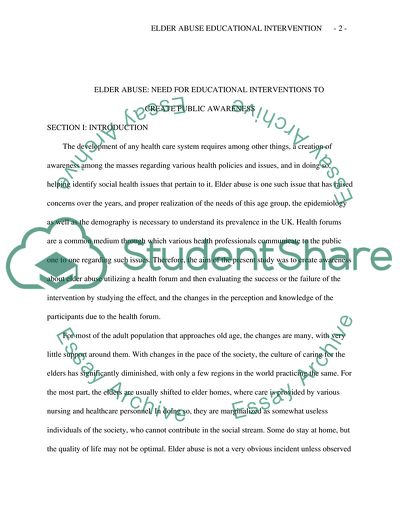Cite this document
(Elder Abuse: Need for Educational Interventions to Create Public Coursework - 1, n.d.)
Elder Abuse: Need for Educational Interventions to Create Public Coursework - 1. Retrieved from https://studentshare.org/social-science/1714700-assessing-planning-implementing-and-evaluating-a-health-promotion-activity
Elder Abuse: Need for Educational Interventions to Create Public Coursework - 1. Retrieved from https://studentshare.org/social-science/1714700-assessing-planning-implementing-and-evaluating-a-health-promotion-activity
(Elder Abuse: Need for Educational Interventions to Create Public Coursework - 1)
Elder Abuse: Need for Educational Interventions to Create Public Coursework - 1. https://studentshare.org/social-science/1714700-assessing-planning-implementing-and-evaluating-a-health-promotion-activity.
Elder Abuse: Need for Educational Interventions to Create Public Coursework - 1. https://studentshare.org/social-science/1714700-assessing-planning-implementing-and-evaluating-a-health-promotion-activity.
“Elder Abuse: Need for Educational Interventions to Create Public Coursework - 1”. https://studentshare.org/social-science/1714700-assessing-planning-implementing-and-evaluating-a-health-promotion-activity.


